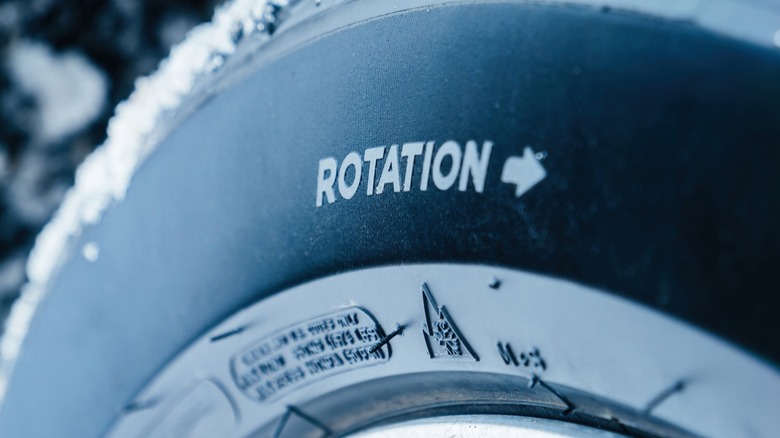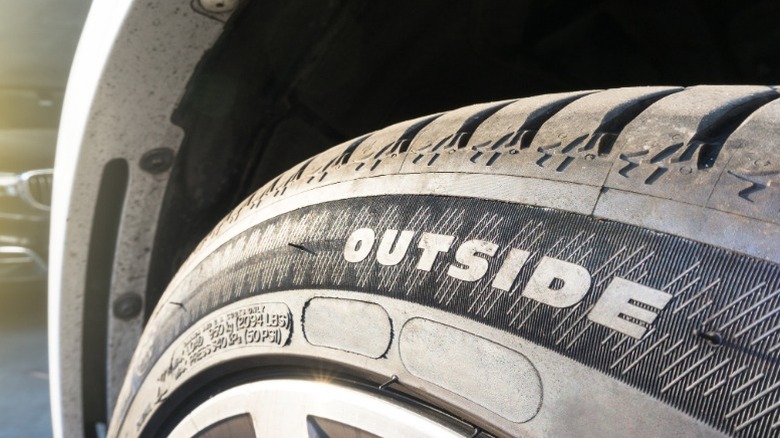Why Some Tires Must Roll In A Specific Direction
The cars we drive and rely on daily are impressive and versatile vehicles, and even average cars can be capable of numerous different driving styles and applications. Modifying a few key systems and components can transform even the most basic and utilitarian vehicle into virtually any type of performance car you can imagine. Among those steps you can take to improve a vehicle's performance and handling, purchasing an upgraded set of tires is often one of the most practical changes you can make and a great first step toward enhancing the car overall.
Car tires come in various styles, depending on the type of vehicle and driving scenario for which they're designed. Some of the most common tire types for average drivers are all-season tires, which are built to handle normal, moderate weather and regular, every-day driving. Other common tire styles include winter tires, all-weather tires, and all-terrain or off-road tires. Besides those variations, there are numerous other types of tires designed for things like racing or performance driving, including directional tires.
Directional tires are designed to roll in one specific direction. You may have noticed car tires with the words "inside" and "outside" or arrows on the sidewall. Those are directional tires. These types of tires must be installed on the side of the car that coincides with their direction, meaning two must always be on the driver's side, while the other two must always be on the passenger's side. If you're wondering why these tires exist and whether they provide any benefits, stick around. Here's the deal with directional tires.
What are the pros and cons of directional tires?
One of the greatest benefits that directional tires provide is the ability to offer increased traction on wet surfaces. Directional tires have a V-shaped tread pattern, which is why they must roll in a specific direction. As the tires spin, that tread pattern allows water to run along the grooves and wick off the tires more quickly and easily than it can on standard tread. Additionally, that V-shaped tread can also contribute to increased handling at high speeds, making directional tires popular choices among performance car drivers. Finally, thanks to the slightly more aggressive look that V-shaped tread can provide, some drivers prefer directional tires for their appearance.
That said, directional tires do come with a few downsides, too. They tend to be more expensive than standard all-season tires, which can be a major turn-off for some drivers, especially considering that normal tires are already pretty pricey. Next, you can't rotate directional tires the same way that you can rotate omni-directional tires. Because directional tires must always remain on the left or right side of the car, you can only move them from the front axle to the rear axle and vice versa. That's not always a huge deal, but it could shorten the tires' lifespan slightly.
If you're considering purchasing a set of directional tires for your vehicle, it's important that you think about how you plan to drive the car and the weather conditions in your area. Directional tires probably aren't worth the extra money for drivers in moderate climates who use their vehicles for normal commutes. However, if you own a performance vehicle and are looking to boost its handling, or you live somewhere that gets a lot of rain, directional tires may be worth considering.

